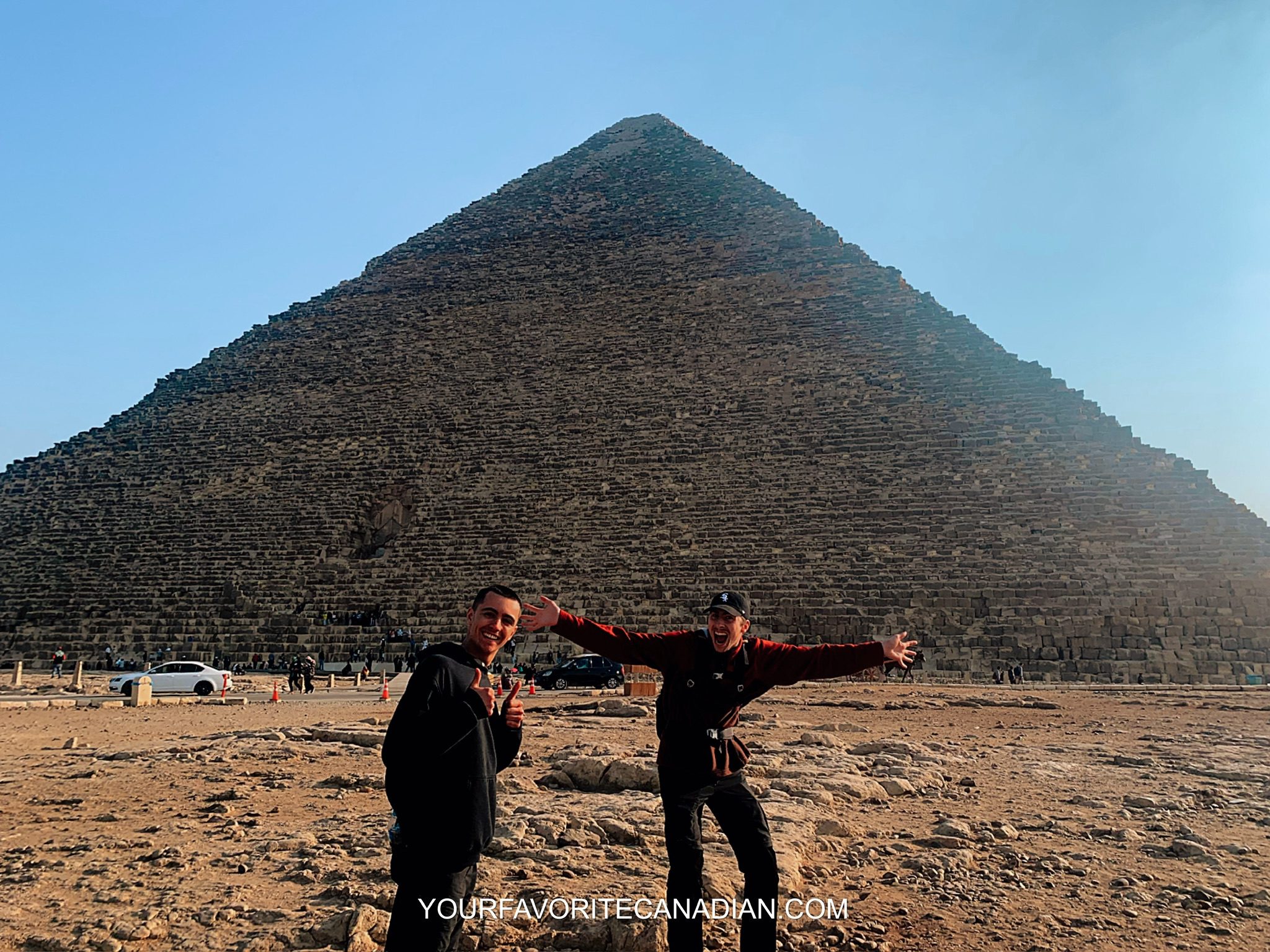The pyramids of Egypt are one of the world’s most iconic landmarks, drawing travelers from around the world. Located just outside Cairo, these ancient structures were built as tombs for pharaohs and high-ranking officials, with their distinct shape symbolizing the ascent to the afterlife.
Whether you’re curious about their history or practical travel tips, this guide will provide valuable insights and tips to help you make the most of your day exploring these fascinating monuments.
- Is Hiring a Guide Worth It?
- How I Arranged My Pyramid Tour
- What to Expect During Your Pyramid Visit
- Pyramid Accessibility: What You Need to Know
1
Is Hiring a Guide Worth It?
Absolutely, yes! Trust me on this one—you cannot fully enjoy this experience without a guide. Egypt’s history is complex and rich, and having a guide to explain the context and significance of what you’re seeing makes all the difference. Without this background knowledge, it’s easy to miss the importance of these incredible sites.
If you’re looking for a guide, check online reviews, or ask locals or your accommodation for recommendations to ensure you get someone knowledgeable. Hiring a licensed guide will enhance your understanding of the intricate history, and most guides are fluent in English.
Stay connected! Follow us on social media for exclusive content & updates on our travels.



On our website, you’ll find all the essential information and tips, while on our social media, you’ll get even more – including personal experiences, funny moments, stunning videos, and much more!
2
How I Arranged My Pyramid Tour
I chose to book my day trip through my hostel, which included convenient pickup from my accommodation and drop-off at the end of the day. Booking through your hostel or hotel is often a smart option, as it allows you to ask questions directly and get personalized recommendations, unlike online bookings. Plus, these tours tend to have smaller groups, offering a more intimate experience.
For us, it was just me (Léonie), my boyfriend, a friend, and our guide. Along the way, we saw larger groups of 10–25 people, likely from popular online tour platforms. Having a smaller group made the experience more personalized and enjoyable.
We stayed at the Deluxe Australian Hotel, and our guide was excellent—friendly, knowledgeable, and very accommodating. Since we visited Cairo in January (the low season), I was able to book the trip at the last minute. However, if you’re planning to visit during the busy summer months, I recommend contacting your hostel or hotel in advance to secure a spot for your preferred day.
Alternative Booking Options
If booking through your hostel/hotel doesn’t appeal to you, there are plenty of online options available on platforms like TripAdvisor or GetYourGuide. These sites allow you to compare prices, read reviews, and select the tour that best suits your preferences.
Cost
The tour cost 2,150 EGP (around $60 CAD) per person, which included the guide and transportation. Note that entrance fees for the museum and pyramid site were not included.
3
What to Expect During Your Pyramid Visit
We were picked up from our hostel early in the morning and started the tour right away. Here are the three main activities we did throughout the day:
Note: Almost every tour company follows a similar route, so even if you don’t book through my hostel, your experience will likely be similar.
1. The Open-Air Museum of Memphis
Our first stop was the Open-Air Museum of Memphis. As the name suggests, this museum is mostly outdoors, featuring large statues and small artisanal markets. Memphis was once Egypt’s ancient capital and played a significant role in the development of early dynasties. The highlight of the museum is the massive statue of King Ramses II, one of the most powerful pharaohs.
You can comfortably explore the museum in about 30 minutes. Admission is 60 EGP ($3 CAD) for adults, and kids get in for free.
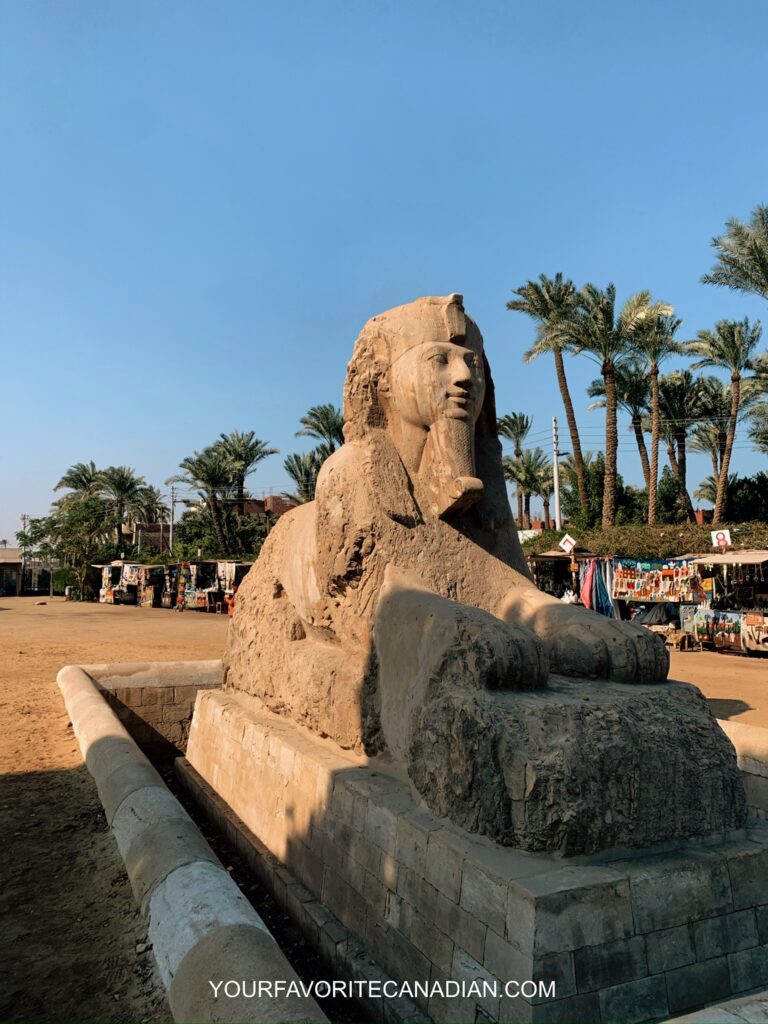

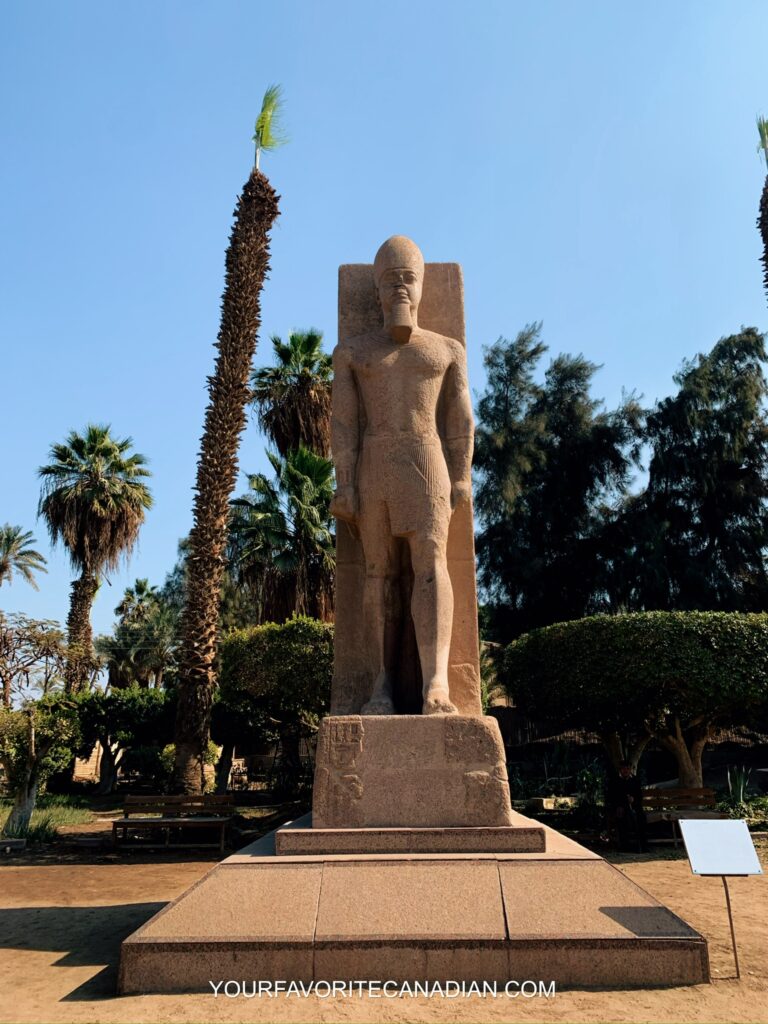
2. The Step Pyramid of Djoser
Next, we visited the Step Pyramid of Djoser, the first pyramid ever built in Egypt. This pyramid, designed by the architect Imhotep, marked a major innovation in ancient Egyptian architecture and paved the way for the construction of the later pyramids of Giza. While it’s not as impressive in size, its historical significance is fascinating.
You can enter this pyramid without any additional fee. Keep in mind that the tunnel is narrow, and even in January, it was quite hot inside. At the end of the tunnel, you can stand up and admire the ancient symbols on the walls.
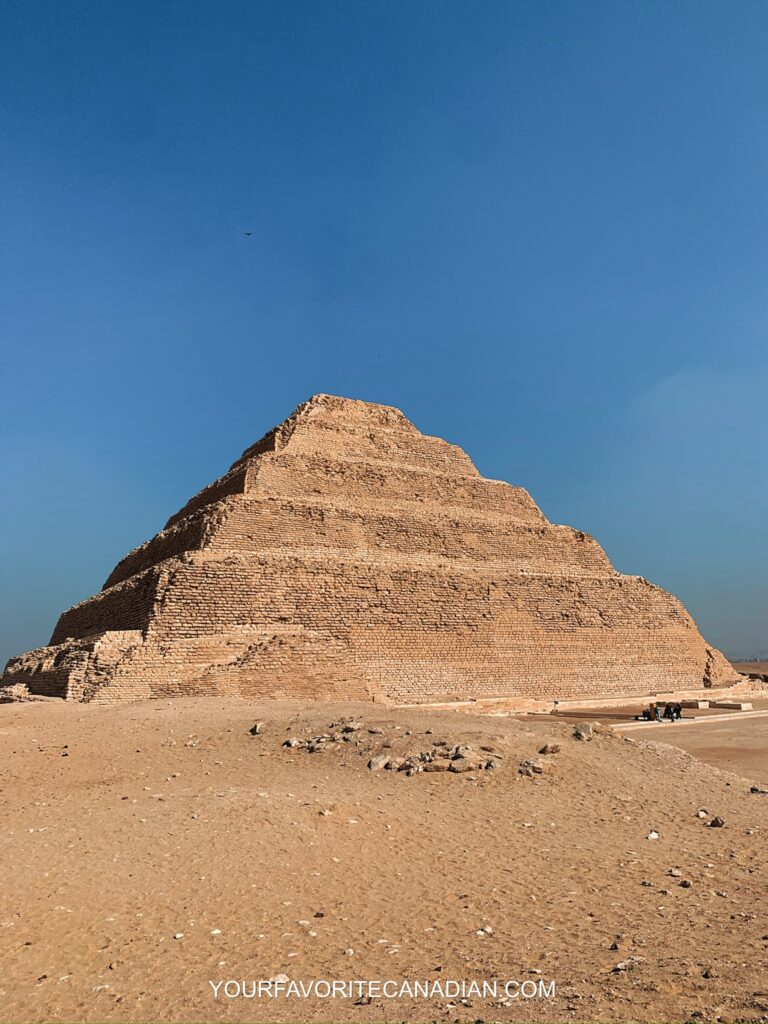
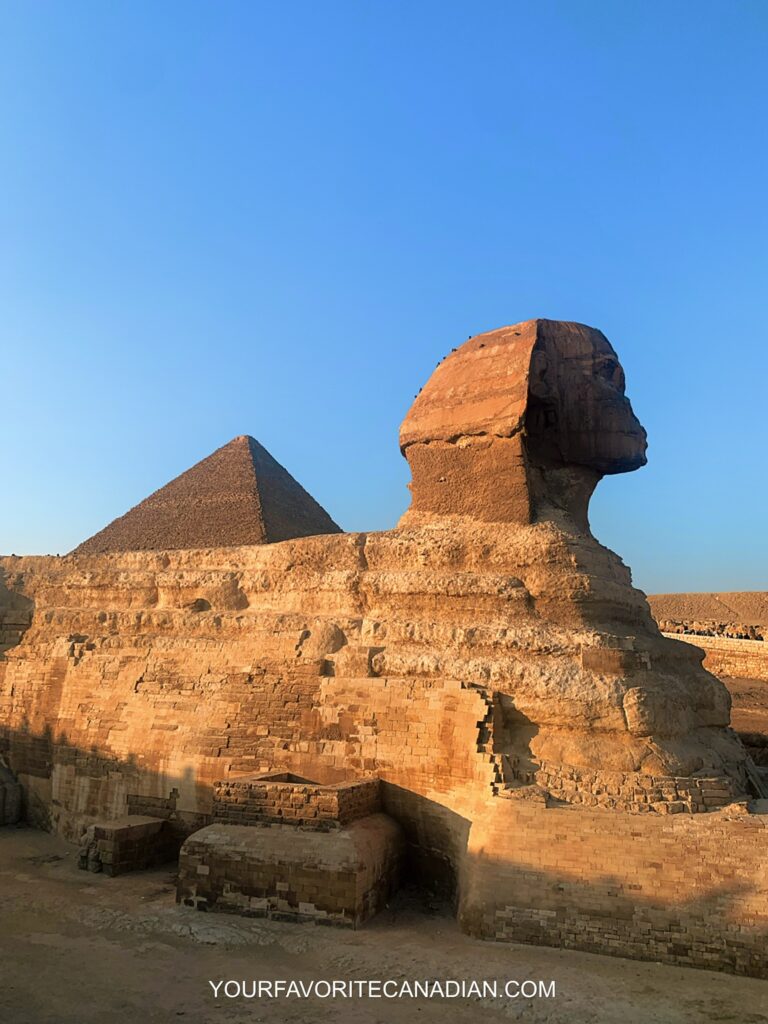
3. The Great Pyramid of Giza & the Sphinx
The last stop—and the highlight of the day—was the Great Pyramid of Giza. As the only remaining Wonder of the Ancient World, it stands 146 meters (481 feet) tall and is an architectural marvel. Built for Pharaoh Khufu, it’s made of massive limestone and granite blocks.
You can enter the pyramid for an extra fee, but there’s usually a line of people waiting.
Right next to the Great Pyramid are two other pyramids: the Pyramid of Khafre, which appears taller due to its higher elevation, and the smaller Pyramid of Menkaure. Of course, you can’t forget to visit the Great Sphinx, a massive limestone statue with the body of a lion and the head of a pharaoh.
4
Pyramid Accessibility: What You Need to Know
While exploring the pyramids is a magical experience, it’s important to note that the terrain can be challenging. Walking across sand and uneven ground is common, so sturdy footwear is essential.
If you’re considering entering the pyramids, be prepared for narrow passageways that can be difficult for those with mobility issues. Unfortunately, many of the ancient sites are not fully accessible for travelers with disabilities, so it’s a good idea to plan ahead and discuss any specific needs with your guide.
Like this post? Pin it for later!
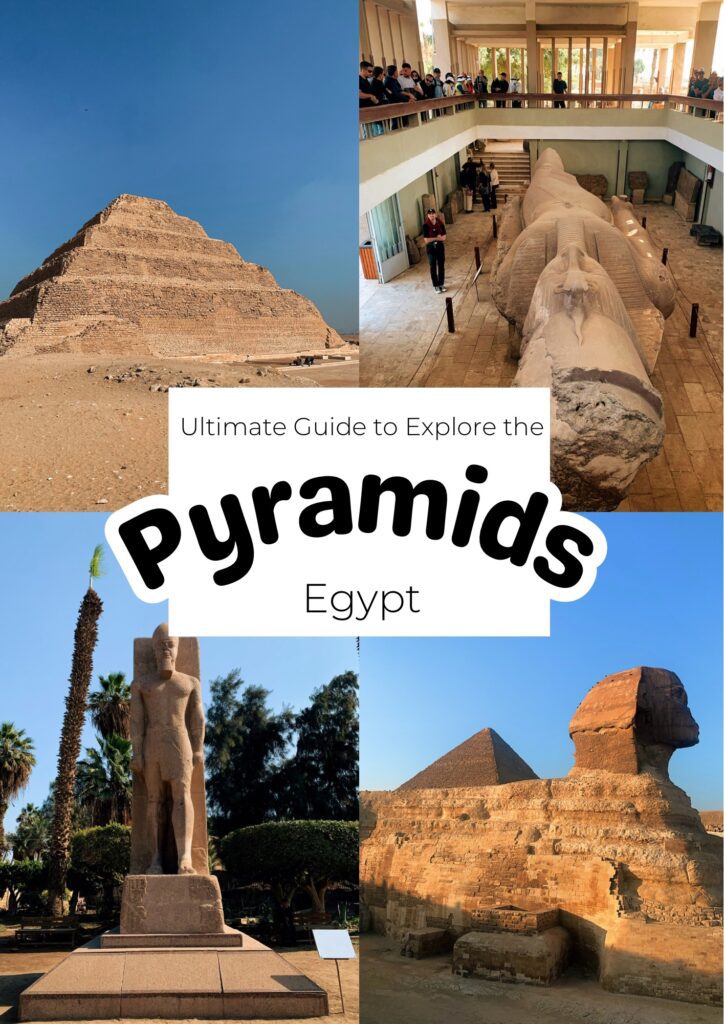
Don’t want to miss out on our latest articles? Be sure to subscribe to our website, and you’ll receive a notification every time we publish something new!
